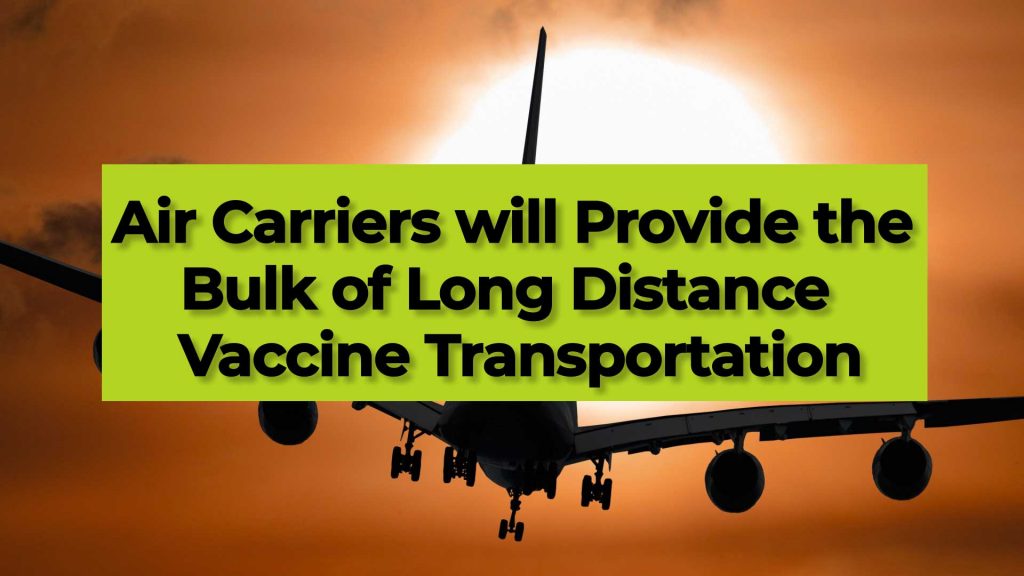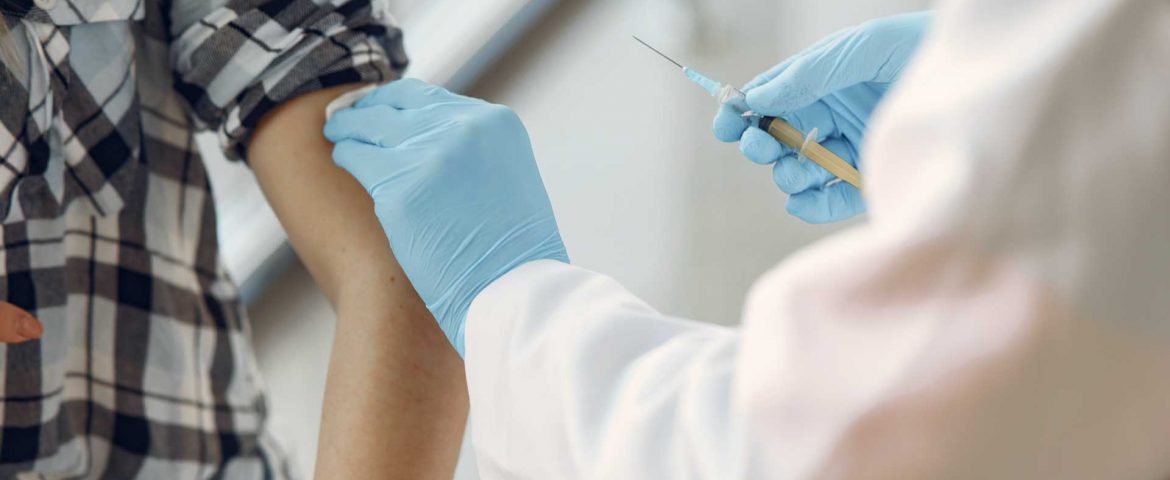As has become a common theme for supply chain managers in 2020, COVID19 continues to rage throughout the world with daily cases now sitting over 200,000 and over 260,000 deaths just in the USA. Supply chain and business leaders have struggled to maintain any sort of standard operations.
Within the last several weeks two of the world’s leading pharmaceutical firms, both Pfizer and Moderna, have produced breakthrough covid19 vaccines that are extremely promising, but still several months away from widespread use. In addition to these vaccines, there are numerous other vaccine candidates in trials. With these vaccines, comes the interesting challenge of how will a future covid19 vaccine be distributed to your local clinic or pharmacy?
The demanding requirements for a vaccine distribution plan will be immensely challenging. With over 300 million people in the USA alone, just reaching the country’s population will take a large amount of planning and coordination to ensure that vaccines are delivered in a timely manner, not damaged or subjected to temperatures beyond their requirements.
There could potentially be many places a person can get the vaccine, the obvious choices are local clinics, pharmacies, and hospitals, but just like with testing, it is very likely that vaccines will be given at CDC outdoor locations in parking lots, public buildings, or even department stores. This is a central planning point in vaccine distribution plan, since the entire operation is based on how to get vaccines from the manufacturers to local clinic and vaccination centers.
Let’s take a look at how COVID19 Vaccines Will be Distributed and some of the challenges supply chain planners will face.

Stringent Transportation Requirements
What will the production footprint look like? How many different production facilities will be used? These are also huge unknowns. Most likely there will be multiple factories around the world producing vaccines, which could help to limit the amount of international transportation needed, outside of sending vaccines to the developing world.
Extremely cold transport and storage temperatures are likely to be a requirement, which will mean a very careful operation to ensure truckloads of vaccines aren’t ruined if a generator runs out of fuel. In addition, the different approved vaccines will likely have different requirements which will complicate the distribution model.
COVID19 distribution will fall heavily on cold chain providers including warehousing, container and even air freight carriers that can handle refrigerated cargo. One of the most critical aspects of distribution that the CDC will have to manage is the quality assurance of keeping vaccines at the correct temperature. Just one step of the supply chain that falls outside of the prescribed temperature requirements could ruin tens of thousands of doses.
Refrigerated containers could also play a role as a form of extra capacity outside the cold chain trucking capacity currently available. While it’s not likely that intermodal rail or ocean freight will play a huge role in the direct distribution of the vaccines, ocean and rail will likely play a role in making sure vaccines factories have the raw materials needed such as the millions of glass bottles and vials that will transport the vaccines across the nation.
Proper Planning will be Key
Building a reliable covid19 distribution chain won’t happen overnight. It will take months of planning and preparation with widespread communication and collaboration between the CDC, pharmaceutical firms, local agencies and transportation providers to build a system that will work effectively and reliably.
There have been recent press releases that firms such as DHL, Korean Air, Air France and Pfizer are working with container manufacturers to build new specially designed refrigerated containers utilizing both dry ice and liquid nitrogen-based systems. According to several reports, dry ice demands will be immense to keep storage systems cold enough, as dry ice is effective, simple and relatively cheap. Look to see more investment from various carriers and distribution partners to expand their cold chain capacity. According to information released by Pfizer, a freight container will be able to hold between 1,000 and 5,000 cases depending on packaging requirements.
In addition to truckload and warehousing providers moving vast amounts of vaccines, parcel carriers such as USPS, UPS, Fedex and DHL will be heavily involved in the overall movement of the vaccines. Air freight will provide hub and spoke style distribution capacity from the factories to other US hubs, then trucks can handle moving the doses on local delivery runs. Airfreight will be relied upon heavily due to its ability to reduce transit times significantly.
When will COVID19 Vaccines be available?
This is a question everyone is asking, and no one is exactly sure. Several pharma firms have made commitments that there will be doses of the vaccines before the end of the year as long as the FDA gives an emergency approval nod, which is potentially able to happen as early as December 10. However, a more likely scenario puts the very earliest doses available within the US arriving in January, likely to healthcare workers first.
Most likely for the average American vaccines will be widely available within the first or second quarter of 2021. For the entire world to be vaccinated to a 90% or greater percentage of the population could take a few years, unfortunately.
The funding of transportation and storage will also be a challenge for some regions, with funding likely coming from a mix of federal, state and even local municipalities. The CDC will need to be careful to make sure vaccine distribution isn’t hampered by a lack of funding or even communication between the many entities and agencies that will be involved. Another example of planning is Unicef working with 350 airlines and logistics firms in preparation to move 2 billion doses and 1 billion syringes.
A way back to Normalcy
Keep in mind that while vaccines will be a MAJOR step to resuming a normal way of life, it won’t be until the end of 2021 at the earliest, then social distancing and masking wearing procedures can be abandoned. Until the majority of the population has been vaccinated our guard cannot be let down. It will be a significant and challenging undertaking to distribute the vaccine to the majority of the US population in a timely manner. This will be one the greatest challenges supply chains have faced, certainly on the back of the massive disruptions supply chains have already had due to the ongoing COVID-19 pandemic. Supply chain firms as well as agencies such as the CDC, and retailers that will administer the vaccines, such as Walgreens or CVS, will have to increase capacity, think outside the box, adapt when needed, and maintain the absolute highest levels possible of transportation and storage standards.
Look for an updated version of this article in the coming months as the COVID19 vaccine situation evolves.
Recommended for Further reading:
Zmodal provides comprehensive supply chain solutions that are data based and focused on optimizing your supply chain logistics plan for better reliability and efficiency. We focus on a multimodal approach to building resiliency that is backed by a first class team that provides 24/7 support and the technology to keep your supply chain connected and visible. Our technology provides shippers easy access to convert over the road freight to intermodal. If you want to talk or want a completely free initial consultation, give us a shout!



